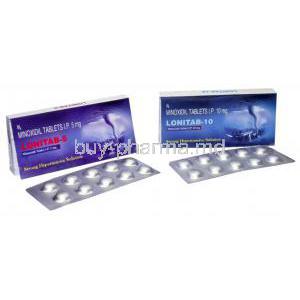Amlodipine
Uses
Amlodipine is used in the treatment of hypertension (high blood pressure), Amlodipine can help lower blood pressure in patients suffering from hypertension.
How it Works
Amlodipine is also known as calcium channel blockers or calcium ion antagonists, Amlodipine works in the body by widening the blood vessels, mwhich makes it easier for the heart to pump blood around the body and help increase the supply of blood and oxygen to the heart. Amlodipine as Calcium channel blockers do not change the amount of calcium in your blood or bones. Amlodipine works by blocking the amount of calcium that goes into the 'smooth' muscle cells in the walls of the arteries and in the heart. Calcium is needed for muscles to contract, so reducing the amount of calcium causes the muscle cells to relax, allowing more smoother blood flow and directly treating hypertension
Common Side effects
Patients who take Amlodipine may suffer from such side effects;
Fatigue,
Sleepiness,
Flushing (sense of warmth in the face, ears, neck),
Headache,
Ankle swelling,
Nausea,
Dizziness,
Palpitations,
Edema,
Abdominal pain
Telmisartan
Uses
Telmisartan is used in the treatment of increased blood pressure, heart failure, heart attack and diabetic kidney disease.
How it Works
Telmisartan is known as an angiotensin receptor blocker which is also called an angiotensin-II receptor antagonist (AIIRA). Telmisartan is used to treat high blood pressure or hypertension. Telmisartan works by blocking the effect of a natural chemical made in the bloodstream, called angiotensin II. Angiotensin II causes the blood vessels to narrow, so by blocking this effect, telmisartan allows the blood vessels to relax and widen. The pressure within the blood vessels is then reduced. This also makes it easier for the heart to pump blood around the body.
Common Side effects
Patients who take Telmisartan may suffer from such side effects;
Fatigue,
Orthostatic hypotension,
Weakness,
Dizziness,
Anemia,
Renal impairment,
Vertigo,
Increased potassium level in blood














